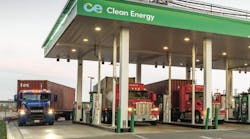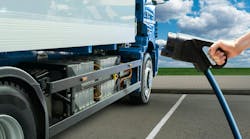Lately there is been a great deal of media buzz around blockchain. At a recent NationaLease meeting, attendees were given a blockchain primer by Chris Burrus, president of Blockchain in Transport Alliance (BiTA). His group of more than 400 members develops blockchain standards and education for the freight industry.
If you have been looking for a succinct definition of blockchain, Burrus provided one that might make things clearer:
“Blockchain is a decentralized and distributed digital ledger to record transactions across many computers so that the record cannot be altered retroactively without the alteration of all subsequent blocks and the collusion of the network.”
Benefits of blockchain include, but are not limited to, the fact that it is difficult to alter; it provides a history of a transaction; and new information retains a link to historic information.
To determine if blockchain is right for you, Burrus suggested you first answer the following questions:
- Are you trying to get multiple parties to work together?
- Do you have trust issues between the parties?
- Is it important to get a tamper-proof record of transactions between parties?
- Are you moving something of finite value around?
- Does the group benefit from increased transparency?
Burris predicted that “As blockchain digitizes, decentralizes, secures and incentivizes the validation of transactions, it will fundamentally change the industry.”
And it will do that by eliminating the need for intermediaries, expediting payments and settlements, automating proof of delivery and providing an immutable record of agreed on transactions.
He provided the audience with a snapshot of how blockchain would work:
- Carriers and OEMs connect the truck to a permissions blockchain.
- The carrier solicits freight from 3PLs and shippers connected to the blockchain network.
- Once the carrier has a truck, the network matches a shipper and tells the network how many available hours the driver has.
- A reference price is used to determine how much the shipper will pay for a load. A smart contract that dictates price, fuel and accessories is created and transmitted to the carrier who agrees to the terms.
- After the contract is executed and the truck dispatched, load events are transmitted to the blockchain. This gives the shipper full visibility of the load throughout the transaction.
- Once the load has been delivered, proof of delivery is transmitted and an invoice is sent. A bank pays the carrier immediately and the transaction is finished.
While there are some hurdles for blockchain to overcome including, scalability and data privacy, it is likely that the transparency provided by blockchain will make it an attractive option.



